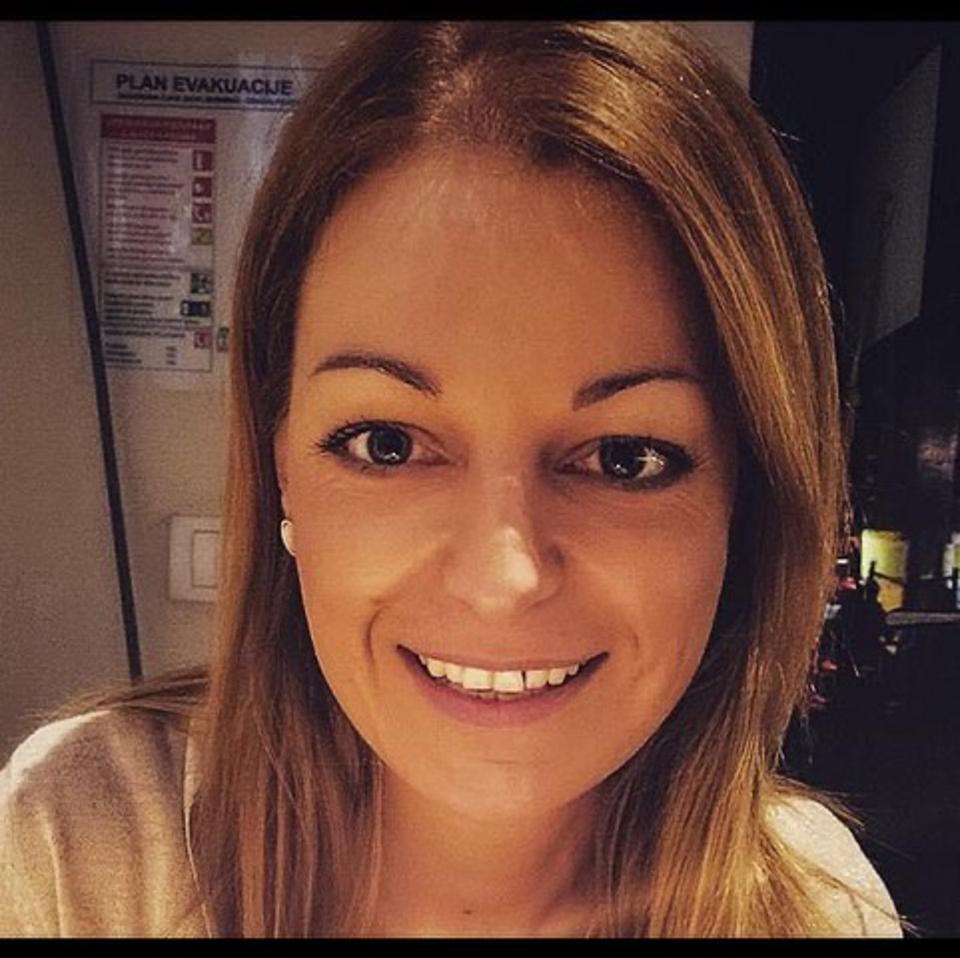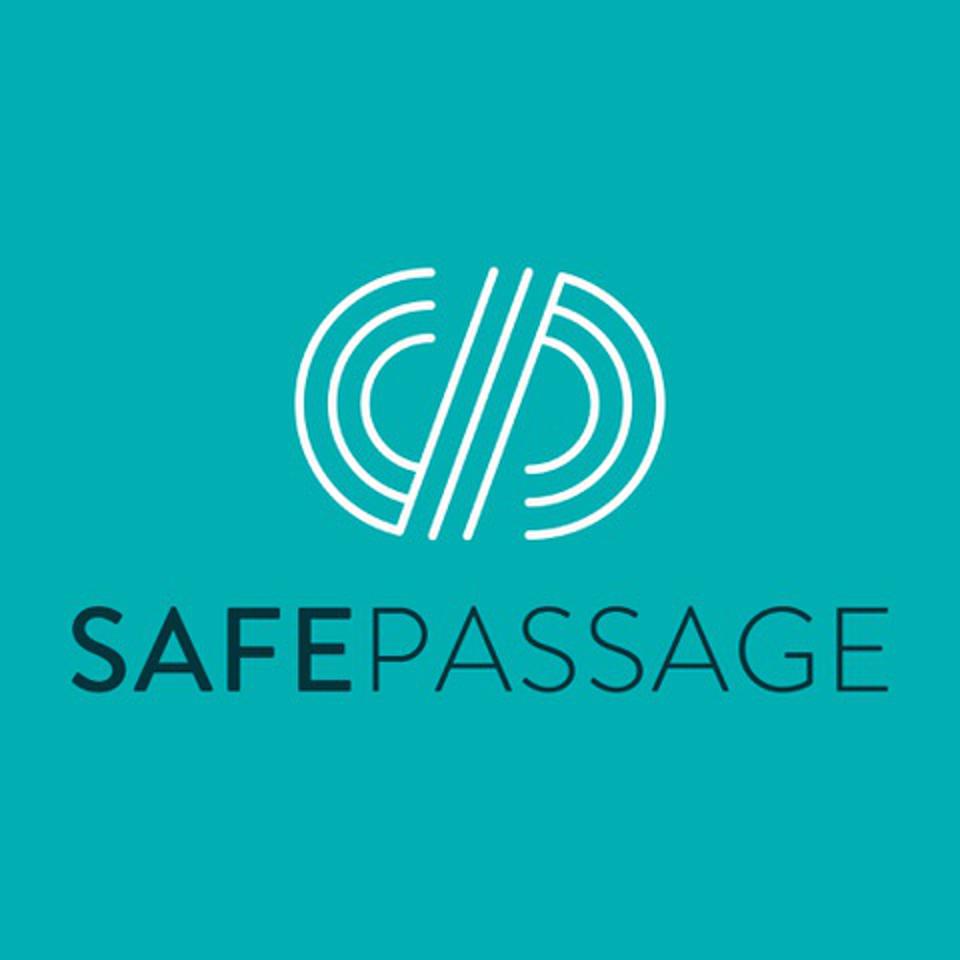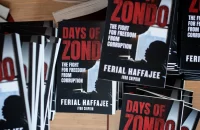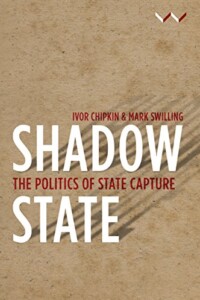How An Anti-Corruption Crusader Invented An Algorithm To Predict Organizational Risk
South Africa went through what current president Cyril Ramaphosa depressingly called “nine wasted years” under his predecessor Jacob Zuma, who finally went on trial this week for corruption stemming from a 2007 charge.

Dr Ivor Chipkin literally wrote the book on corruption in South Africa, where it is called “state capture”.
South Africa went through what current president Cyril Ramaphosa depressingly called “nine wasted years” under his predecessor Jacob Zuma, who finally went on trial this week for corruption stemming from a 2007 charge.
In the state capture years, to use the particularly South African phrase for the wholesale corruption, the country was devastated by Zuma’s alleged strategy to undermine the rule of law and prevent law enforcement catching up with him.
The first thing Zuma did when he became president of the African National Congress (ANC) in 2007 was to pass an internal policy plan to disband the elite investigative unit, akin to South Africa’s FBI.
When Zuma was elected South Africa’s third democratic president in 2009, after Nelson Mandela and Thabo Mbeki, the ruling party effected this resolution, and a general weakening of the law enforcement agencies also began. He was forced to resign in 2018 after Ramaphosa succeeded him as ANC and country president.
Last Wednesday Zuma finally had his day in court, where he pleaded “not guilty” to charges originating from a 2007 corruption case that found his financial advisor Shabir Shaik guilty of corruption, for which he was jailed.
Rampant corruption, especially in Zuma’s second presidential term from 2014, resulted in an estimated R1,5 trillion ($109 billion) being looted from the country’s fiscus.
In 2017, after years of investigative reporting that exposed the extent of state capture, respected South African academic Dr Ivor Chipkin, together with several other academics, released a report, titled Betrayal of the Promise, how South Africa is being stolen, detailing how deep the corruption rot went. These explosive findings have since been published in a book, titled Shadow State: The Politics of State Capture, with Mark Swilling (Kindle edition)
Chipkin and Swillings’s book “documents the influence peddling, rent seeking, insider trading, and corruption that helped turn the Guptas’ business into one of South Africa’s largest corporate empires,” as Foreign Affairs described it. But despite the “alarming level of corruption” in the ruling party and state bureaucracy “that such a book could be published at all in South Africa is a cause for optimism”.
Dr Crispian Olver, the former director-general for South Africa’s Department of Environmental Affairs and Tourism and a well-known political activist who is a medical doctor, wrote that the book was able “to construct a coherent meta-analysis on top of these preceding efforts and to give new meaning to a set of terms around state capture and rent seeking. This in itself is no mean feat, and it has certainly opened up a field of study and debate in South Africa for many years to come,” Olver, now an academic, wrote in his book review.

Jelena Vidojevic
“Could we have seen state capture coming, especially in government institutions?” This is the question that Chipkin and his Serbian wife Jelena Vidojevic, herself an equally respected academic, started working on.
It was in a café in Belgrade that the breakthrough came. In a conversation with some of Jelena’s colleagues at the University of Belgrade, Chipkin and Vidojevic realised that there was a way of automating some of the social science methodologies that they were using. From there it was a small jump to mathematising the analysis. “If the phenomena we were looking for could be described mathematically then we were no longer confined by traditional social science methodologies. Also, we could use different kinds of evidentiary sources, like large organizational datasets. It took us on a new, exciting journey.”
Not being mathematicians, nor with the skills to work with huge datasets, they looked for a way to apply and develop their algorithms. They partnered with data engineers and actuaries Laurence Rau and Daniel Saksenberg, who “had built one of the leading engineering and the machine learning companies in South Africa, Emerge”.
They adapted an already-built engine to Chipkin’s purposes, and the collaboration led to a new company called Safe Passage.
Given the whirlwind of corruption and the emancipation of law enforcement agencies to stop it, Chipkin named the company as a “safe passage” through these stormy times.
Traditional organizational risk assessment tools are largely based on a reading of the financials, he says. “Yet financials are the fire after the reaction. Alternatively, staff risk is done by HR specialists, using well established ratios to predict when staff are likely to resign or to measure staff engagement.”
Using data from all over the organization, including financial and HR data, as well as technical data related to machine output, Safe Passage can produce an overall view of the company, department or office. Most importantly, he adds, the combination of data modelling and social science techniques means that they can tell the difference between a mere correlation and a causal relation.
From this, they have developed “some brilliant hypotheses about what drives performance in organizations. Usually phenomena like efficiency, capacity, corruption, and integrity, for example, are products of the relation between several variables (experience, qualification, turnover and so on)”.
They developed several algorithms that can work quickly through organizational data sets looking for patterns, which are then used to monitor and predict organizational performance.
“In a nutshell, we have produced a way of monitoring and predicting organizational risk,” says Chipkin, who now runs the Government and Public Policy (GAPP) think tank in Johannesburg. “It may be a world first.”
The biggest problem in South Africa today – both financially and for the country’s recovery from state capture and the effects of Covid lockdown – is Eskom, the state-owned power utility.
During the Zuma years it was hollowed out by corruption, including the building of two massive new coal-fired power stations which are years later and hundreds of billions of Rands over budget. Eskom’s debt has ballooned to R484 billion ($35 billion). It has been correctly identified – by South Africa’s government and global ratings agencies – as the biggest threat to the country’s economy.
Eskom’s debt is so large that it cannot pay it from operating expenses, while rolling blackouts for the past 15 years have hammered South Africa’s economy. Should Eskom’s “death spiral” not be addressed and it defaults on its debt, it would trigger a collapse of the whole country’s economy, given how much government has guaranteed that debt.
“We found a correlation between the deterioration of the technical performance of Eskom (the number and frequency of boiler repairs is a good measure of the performance of a power station, for example) and instability in the senior management. If this sounds obvious, it is not,” Chipkin told me.
In Eskom there was a saying: “There is G_d and then there is the power station manager,” he relates. Power stations had their own management teams that, largely, operated autonomously from the general Eskom management. Power plant managers, for example, took operational decisions regarding the temperature of boilers. They also played a key role in the procurement of coal, adapting systems based on the quality of the coal that was delivered.
In other words, if there was turbulence in the general management of Eskom it should not have directly affected operations in the power stations themselves.
“Yet our modelling showed that from around 2008, there was a direct correlation. What was going on? Essentially, from around that time a new Eskom management began to centralize decisions that used to be the domain of power station managers. It was done ostensibly to improve efficiency and to drive organizational transformation.
“Yet, as the senior management was ‘captured’ and became unstable, so this turbulence was transferred directly into the power stations themselves. This is at the core of Eskom’s current problems. The capacity of the power stations has been hollowed out,” he told me.
Or, as he wrote for the Daily Maverick newspaper, “Eskom’s crisis is not simply one of criminality and corruption. Rather, the organization is in a storm of storms, where disruptions in one place (the resignation of a power plant manager, or a shortage of coal, or a boiler bursting) produce complex and unpredictable events somewhere else. Eskom owes more than R400-billion but does not generate enough revenue to pay even the interest on its debt. The less it sells the higher a tariff it needs and so the less it sells.”

Safe Passage’s finding is already common cause in the country. But what Chipkin and his partners are able to do goes beyond general analysis. They can train their model to identify when a power station is likely to trip and can give good warning, therefore, of power outages. They can also, for instance in a company’s financials, determine from a data signature if a transaction is fraudulent, and therefore identify corruption.
For companies, the Safe Passage method will enable companies to model their strategies to anticipate the likely effects of organizational or management changes. It also allows them to see if they have the capacity, IP and wherewithal to fulfil that deliverable. Unlike in the global north where data records are good, the value of their method, says Chipkin, is that it assumes that the data is” uneven, to bad, to unreliable”.
Companies will be able to identify and manage business risk, including fraud identification, more advanced credit scorecard development, more accurate insurance underwriting, optimization of payment collections, and forecasting demand.
“The new field that is really exciting is in the space of predictive maintenance, where we are able to build models to provide early-warnings for all kinds of systems’ failure or break-downs,” Chipkin says.
Additionally, firms will also be able better manage customer relationships, such as which customers will buy which products, identifying which customers are at risk of cancelling, and campaigning to solve their customer service concerns.
“All of these use cases are aimed at either reducing wasted operational costs or at increasing revenue creation,” he says.
Chipkin was the first scholar in South Africa to warn that storms were brewing in government in South Africa. Now he and his team have built the technology to properly monitor and forecast the weather in organizations. Most South Africans would just be glad to have additional warnings of power outages – but will be even happier should these algorithms help fix the country’s biggest millstone, Eskom.


